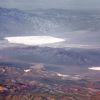Deep underground military bases have long been a subject of fascination and speculation. They are often mentioned in the same breath as conspiracy theories about aliens, mind control, and secret government operations.
But are they real? This article will explore this intriguing topic, exploring what we know and what remains a mystery.
The Concept of Deep Underground Military Bases
Deep underground military bases are more than just bunkers or simple subterranean facilities. They are complex, highly engineered structures that serve various strategic purposes.
Design and Purpose
Deep underground military bases are designed to be self-sufficient fortresses. This means they have everything necessary to support life and operations for extended periods. They have power generation systems, air filtration units, water purification mechanisms, and food storage facilities.
These bases are not just for shelter—they are operational hubs. They house command centers, communication equipment, weapons storage, and living quarters for personnel. They can serve as missile launch sites, hosts for sensitive research, or headquarters for strategic planning.
The underground location of these bases provides a significant defense advantage. Buried deep below the ground, they are naturally shielded from aerial or ground attacks. Their subterranean design protects against nuclear, biological, and chemical threats.
Historical Use of Underground Facilities
The utilization of underground spaces for military purposes has a long history, tracing back to ancient times when armies used natural caves or dug tunnels for defense or surprise attacks. However, as we understand it today, the concept of deep underground military bases has its roots in more recent global conflicts.
During World War II, many countries started building underground bases to protect vital military assets from the devastating aerial bombardment that characterized the war. These bases housed everything from operation centers to aircraft factories. For example, the Germans built massive underground bunkers like the Riese complex to keep their military production safe from Allied bombing raids.
The Cold War era saw a boom in the construction of these bases. The threat of nuclear warfare made underground facilities an attractive option for the U.S. and the Soviet Union. The U.S., for instance, constructed the Cheyenne Mountain Complex during this time, intended to withstand a direct nuclear attack. On the other side of the Iron Curtain, the Soviets were also busy building their own deep underground military installations network.
Modern-Day Underground Bases
The end of the Cold War did not mean a lot of deep underground military bases. These bases continue to be relevant in the modern world. With advancements in drilling technology and underground construction techniques, such bases have become even more sophisticated and secure.
In the U.S., the exact number of these bases is classified, but it’s known that they exist. Besides the famous Cheyenne Mountain Complex, other installations like the Raven Rock Mountain Complex serve as a testament to this. Other countries, including China and Russia, are also believed to maintain their networks of underground bases.
While these bases are often associated with conspiracy theories involving aliens or secret experiments, the reality is far more mundane yet equally impressive. These bases represent human ingenuity and the lengths nations will go to protect their interests and ensure national security.
Air Force Space Command and Underground Bases
The Air Force Space Command, now part of the U.S. Space Force, has always been shrouded in secrecy. It’s responsible for maintaining America’s military satellites, among other duties—tasks that require high security for obvious reasons.
Rumors abound that the Air Force Space Command operates out of deep underground military bases. There is some truth to this: Cheyenne Mountain Complex in Colorado Springs, for example, is known to house several government agencies, including parts of the Space Force.
Known Deep Underground Military Bases
While the existence of deep underground military bases can often be relegated to the realm of conspiracy theories, there are several documented facilities around the globe. While not entirely secret, these bases often have many aspects of their operations classified for security reasons.
Raven Rock Mountain Complex
The Raven Rock Mountain Complex is a notable example of a deep underground military base. This facility, located near Blue Ridge Summit in Pennsylvania, was designed during the Cold War as a potential alternative to the Pentagon in case of a nuclear attack.
Carved into a granite mountain, the complex is fortified by blast doors and equipped with everything needed to support life, including a fire department. The site has its power plant, water reservoirs, and air filtration system, making it capable of supporting operations for extended periods.
The complex houses various government agencies and is believed to be a potential relocation site for high-ranking officials. While the exact details of the operations within the complex remain classified, it’s known that the facility is designed for the continuity of government and military command in a crisis.
Cheyenne Mountain Complex
The Cheyenne Mountain Complex is another well-known deep underground military base. Nestled inside Cheyenne Mountain in Colorado Springs, this base is home to numerous military and government operations.
Like the Raven Rock Mountain Complex, the Cheyenne Mountain Complex was designed to withstand a nuclear blast. It’s fortified with blast doors made from concrete and steel, each weighing 25 tons. The base also has its power plant, water reservoirs, and extensive communication systems.
The complex has several key military command centers, including the North American Aerospace Defense Command (NORAD) and the U.S. Northern Command. It’s also reportedly used by other government agencies, including the Federal Emergency Management Agency (FEMA).
Other Bases
There are other known underground bases as well. For instance, the Dugway Proving Ground near Salt Lake City, Utah, is rumored to house a deep underground military base. While not confirmed, the site is known for testing biological and chemical weapons systems, which would necessitate high security and potentially underground facilities.
Groom Lake, more commonly known as Area 51, is another site often associated with underground facilities. Located in Nevada, Area 51 is one of the most secretive military installations in the U.S. While it’s best known for its association with UFO conspiracy theories, the base is likely used for testing new aircraft technologies. Whether it houses a deep underground military base remains unconfirmed but is widely speculated.
These bases, confirmed and speculated, represent the tip of the iceberg regarding deep underground military bases. While much about these bases remains shrouded in secrecy, what we know paints a picture of highly sophisticated and secure facilities capable of ensuring continuity of operations even in the face of significant threats.
Underground Military Bases: Fact or Fiction?
The existence of underground military bases is a well-documented fact. However, the extent and purpose of these bases often fall into the realm of speculation, leading to many claims ranging from plausible to outlandish.
The Network of Tunnels Theory
One common belief is that a vast network of tunnels connecting bases across the country exists. This theory suggests that these tunnels are used for quick and covert transportation of personnel, equipment, or even prisoners. While it’s true that some bases may be interconnected for strategic reasons, the idea of an extensive nationwide or global tunnel network remains unproven.
Alleged Secret Bases
Some theories go beyond mere underground bases and propose the existence of secret facilities where nefarious activities occur. Two alleged bases are Dulce Base in New Mexico and S4 near Papoose Lake in Nevada.
Dulce Base is rumored to be a secret underground facility where extraterrestrial beings work alongside humans on advanced technology and genetic experiments. These rumors originated from a businessman named Paul Bennewitz in the 1980s and have been popularized by various UFO enthusiasts and conspiracy theorists. However, there is no concrete evidence to support these claims.
S4, allegedly located near Area 51, is another base often mentioned in conspiracy circles. It’s purported to be a site where recovered alien technology is reverse-engineered. Bob Lazar, a man who claimed to have worked at the site, popularized this theory. Again, while these stories are captivating, they lack verifiable proof.
The Reality of Underground Bases
The reality of underground military bases is likely less sensational than many theories suggest. Most known underground bases serve strategic purposes, providing high security and resilience against attacks. They house critical military operations, serve as storage for weapons, or act as command centers in times of crisis.
While it’s plausible that there are more bases than those officially acknowledged, it’s important to approach claims about their purpose and extent with a healthy dose of skepticism. Without credible evidence, extraordinary claims remain just that—claims.
The Technology Behind Deep Underground Military Bases
The construction and operation of deep underground military bases involve various advanced technologies and engineering feats. These bases are not merely dug-out caves but highly sophisticated facilities designed to support life and operations for extended periods, often in isolation from the outside world.
Construction Technology
Building an underground military base starts with excavation, which requires specialized machinery capable of drilling through rock. Modern tunnel boring machines (TBMs) can bore through hard rock, creating tunnels of varying diameters. These machines also line the tunnel walls with concrete segments to prevent collapse, ensuring a safe environment for subsequent construction.
The base structure often involves reinforced concrete and steel construction, designed to withstand external pressures from the surrounding earth and potential attacks. The natural rock around the base is sometimes used as additional protection.
Life Support Systems
One of the most critical aspects of an underground military base is its life support system. These include air filtration and circulation systems that remove waste gases and supply fresh air. Given the potential for nuclear, biological, or chemical attacks, these systems often incorporate filters to remove harmful substances.
Water supply and purification systems are also essential. Some bases have underground reservoirs or wells, while others may rely on water recycling systems.
Power generation is another crucial component. Many bases have nuclear power plants for long-term autonomy, though diesel generators and connections to the national grid are also common.
Communication Systems
Underground bases need advanced communication systems to maintain contact with the outside world and other bases. These systems must work despite the base’s depth and potential interference from the surrounding rock. Satellite uplinks, radio communications, and fiber optic lines are commonly used.
Security and Defense Systems
Security is paramount for a military base, especially one that houses critical operations. Surveillance systems, intrusion detection, blast doors, and various defensive measures are standard. In the event of an attack, bases may have automated defense systems capable of neutralizing threats.
Living Conditions
Finally, to support personnel over long periods, bases need facilities like small towns. This includes living quarters, dining facilities, medical facilities, and recreational areas. The aim is to create a livable environment where personnel can effectively work and live for extended periods if necessary.
In conclusion, the technology behind deep underground military bases combines advanced engineering, life support systems, communication technology, and security measures. These components combine to create a self-sustaining, secure facility capable of withstanding some of the harshest imaginable conditions.
Conclusion
Deep underground military bases are a reality, although many aspects remain shrouded in secrecy. They serve critical strategic purposes, helping to protect our troops and national security. While we may never know all these bases’ secrets, their existence is a testament to human ingenuity and the lengths we will go to ensure our safety.
For those interested in learning more about this fascinating topic, I recommend the following books: “UNDERGROUND BASES & TUNNELS: What is the Government Trying to Hide?” by Richard Sauder and “Raven Rock: The Story of the U.S. Government’s Secret Plan to Save Itself–While the Rest of Us Die” by Garrett M. Graff.
Sources:
- Graff, Garrett M. “Raven Rock: The Story of the U.S. Government’s Secret Plan to Save Itself–While the Rest of Us Die.” Simon & Schuster, 2017.
- Sauder, Richard. “Deep Underground Military Bases: Hidden in Plain Sight.” Adventures Unlimited Press, 1995.
- Sauder, Richard. “Underground Bases & Tunnels: What is the Government Trying to Hide?” Adventures Unlimited Press, 1995.
Recommended Further Reading:
Auto Amazon Links: No products found. No products found.



